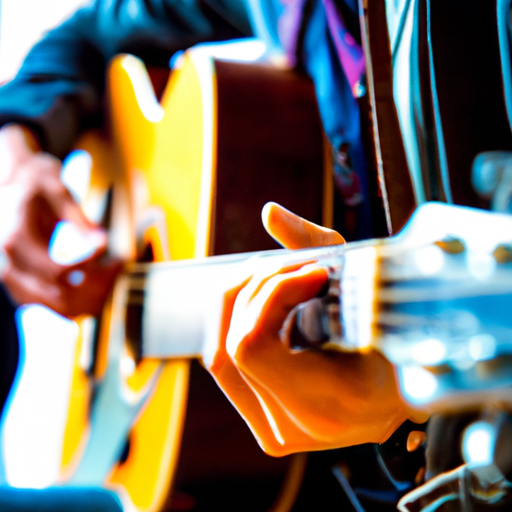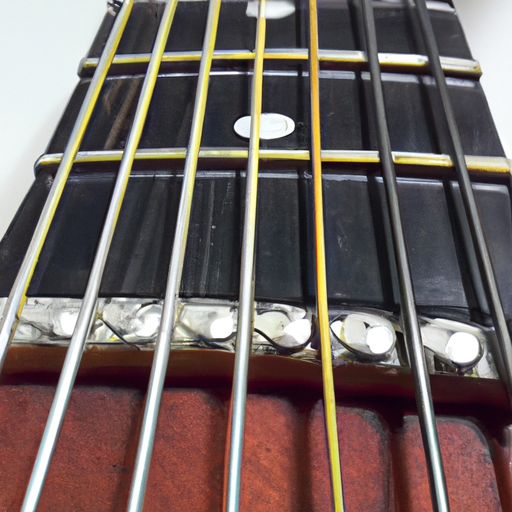
Tuning a guitar is a fundamental skill that every guitarist should master. Whether you are a beginner or an experienced player, having a properly tuned guitar is essential for achieving optimal sound and enjoying the full potential of your instrument. In this article, we will guide you through the process of tuning your guitar, starting from understanding standard tuning to exploring alternate tunings and advanced techniques. By the end, you'll be equipped with the knowledge and skills to achieve the best possible tuning for your guitar.

Standard tuning, also known as EADGBE, is the most commonly used tuning for guitars. In standard tuning, the six strings are tuned to the pitches of E, A, D, G, B, and E, from the lowest to the highest string. It provides a balanced and versatile foundation for playing a wide range of musical genres.

To identify if your guitar is in standard tuning, you can use a reference pitch from another instrument or a tuning tool. Pluck each string individually and compare the pitch to the reference. If they match, your guitar is in tune.
It's important to start with standard tuning before experimenting with alternate tunings. This allows you to develop a strong foundation and familiarize yourself with the standard chord shapes and scales used in most music.
There are various tuning tools available to help you tune your guitar accurately. Some popular options include tuner apps for smartphones, clip-on tuners, and pedal tuners. Each type of tuning tool has its pros and cons.
Tuner apps are convenient and easily accessible, but they may not be as accurate in noisy environments. Clip-on tuners attach to the headstock of your guitar and provide precise tuning, but they require batteries. Pedal tuners are preferred by professional guitarists for their accuracy and ability to be integrated into pedalboard setups.
To use these tuning tools, simply follow the instructions provided with the specific tool. Most tuning tools utilize a display that shows the pitch of the string being played. Adjust the tuning pegs until the pitch matches the desired note.
Tuning by ear is a valuable skill that every guitarist should develop. It allows you to tune your guitar even when you don't have access to tuning tools. One of the most common methods for tuning by ear is the fifth-fret method.
To use the fifth-fret method, start by playing the open sixth string (E) and the fifth fret of the fifth string (A). Adjust the tuning peg of the sixth string until the two notes sound the same. Repeat this process for each string, using the fifth fret of the string below as a reference.
Training your ear to recognize pitch takes time and practice. You can improve this skill by regularly playing along with well-tuned instruments, using online tuning resources, and experimenting with different chords and scales.
While standard tuning is the most widely used, there are many alternate tunings that offer unique sonic possibilities and are commonly used in specific genres or styles of music. Some popular alternate tunings include Drop D, DADGAD, and Open G.
To tune your guitar to alternate tunings, you can use a combination of tuning tools and reference pitches. Many online resources provide detailed instructions for each alternate tuning. Experimenting with alternate tunings can inspire new ideas and open up new creative avenues.
Using alternate tunings is particularly beneficial for different styles of music. For example, Drop D tuning is popular in heavy metal and rock music, while DADGAD is often used in folk and fingerstyle guitar playing. Each alternate tuning has its unique characteristics and can dramatically change the sound and feel of your instrument.
While tuning your guitar, you may encounter common tuning issues such as strings slipping or tuning instability. These problems can affect the overall tuning accuracy and stability of your guitar. Understanding how to troubleshoot and fix these problems is crucial.
If your strings are slipping, make sure to properly wind them around the tuning pegs and use string lubricant if necessary. If you experience tuning instability, check if the guitar's neck needs adjustment or if the strings need to be replaced. Regularly cleaning and maintaining your guitar can prevent these issues from occurring.
Guitar maintenance plays a significant role in achieving and maintaining proper tuning. Factors such as string condition, neck relief, and overall setup affect the stability and accuracy of your guitar's tuning.
To keep your guitar in optimal condition for tuning, regularly change your strings, clean the fretboard, and ensure proper neck relief. Additionally, periodic professional setups can ensure that your guitar's intonation and action are properly adjusted.
Playing in different environments can introduce variations in temperature and humidity, which can affect your guitar's tuning. It's important to know how to adjust your tuning accordingly to maintain optimal sound and playability.
In outdoor gigs or studio recordings, for example, temperature and humidity changes can cause your strings to expand or contract, resulting in a change in tension and pitch. Keeping spare strings and regularly checking and adjusting your tuning during breaks can help mitigate these effects.
Advanced tuning techniques, such as intonation and harmonics, allow for even more precise tuning and optimal sound. Intonation refers to the accuracy of the pitches up and down the fretboard, ensuring that each note is in tune at various positions.
Harmonics are used to fine-tune each string by comparing the harmonics of different strings. These advanced techniques require a deeper understanding of guitar construction and setup. It is advisable to consult a professional or luthier for assistance with these techniques.
Tuning your guitar for optimal sound is essential to fully enjoy the beauty of your instrument. By understanding standard tuning, utilizing tuning tools, and developing your ear, you can achieve accurate and stable tuning. Exploring alternate tunings and advanced techniques can open up new possibilities and inspire creativity. Remember to regularly maintain your guitar and adjust your tuning for different playing environments. With practice and patience, you'll be able to achieve the best possible tuning for your guitar and unlock its true potential.
For more information on guitar rentals and sales, please visit https://chothuebannhac.net/cho-thue-ban-nhac/luom-lat-tin-do-day/.